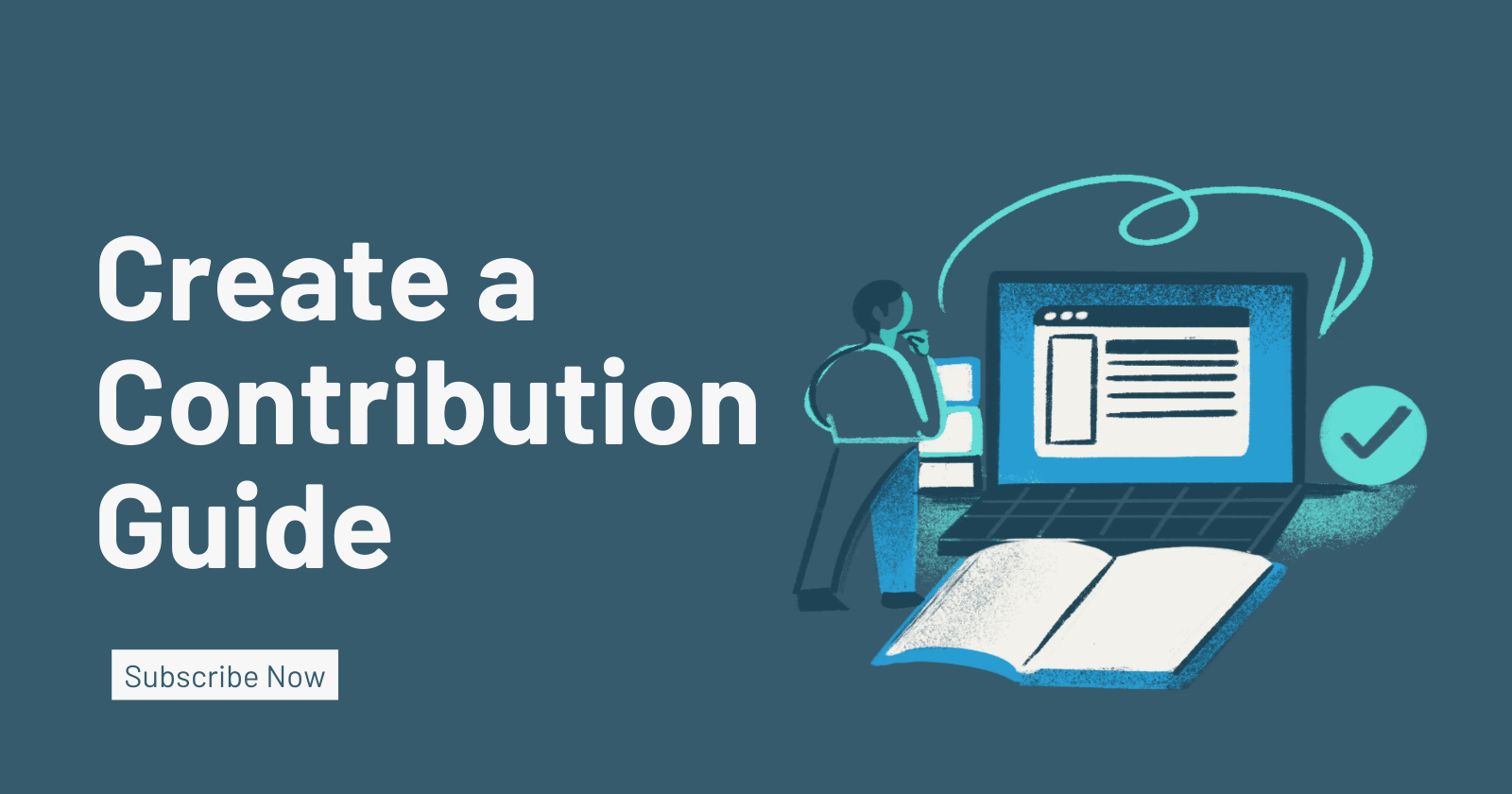How to Create a Contribution Guide for Your Open-Source Project
 Fanny Nyayic
Fanny Nyayic
If you're a seasoned open-source developer or just starting, having a well-defined contribution guide is crucial for attracting contributors and maintaining a healthy project. Let's dive into the key steps and provide practical examples to help you get started.
Why a Contribution Guide Matters
A contribution guide is essential because it sets clear expectations for potential contributors, helping them understand how they can add value to your project. It also ensures consistency in contributions and can significantly reduce the friction of onboarding new contributors.
Step 1: Start with a Warm Welcome
Your contribution guide should begin with a warm and welcoming introduction. This section sets the tone and makes contributors feel valued.
Example:
# Welcome to [Project Name]!
Thank you for considering contributing to [Project Name]! We're excited to have you here and can't wait to see what you'll bring to the project. Whether you're fixing a bug, adding a new feature, or improving our documentation, your contributions are highly appreciated.
Step 2: Outline the Contribution Process
Next, outline the steps contributors should follow to make their contributions. Be as detailed as possible to avoid confusion.
Example:
## How to Contribute
1. **Fork the Repository:** Start by forking the repository to your GitHub account.
2. **Clone the Repository:** Clone your fork to your local machine using `git clone`.
3. **Create a Branch:** Create a new branch for your feature or bug fix using `git checkout -b feature/your-feature-name`.
4. **Make Changes:** Make your changes in the new branch. Ensure your code follows the project's coding standards.
5. **Commit Changes:** Commit your changes with a clear and concise commit message.
6. **Push to GitHub:** Push your changes to your forked repository using `git push origin feature/your-feature-name`.
7. **Submit a Pull Request:** Open a pull request from your forked repository to the main repository.
Step 3: Define Coding Standards
To maintain consistency, it's essential to define your project's coding standards. This can include code style, formatting, and naming conventions.
Example:
## Coding Standards
- Use [coding style] (e.g., PEP 8 for Python projects).
- Write clear and concise comments.
- Follow the [project's naming conventions] (e.g., camelCase for variables, PascalCase for classes).
- Ensure your code passes all tests before submitting a pull request.
Step 4: Provide Testing Instructions
Make it easy for contributors to run tests and ensure their changes don't break existing functionality.
Example:
## Running Tests
Before submitting your pull request, please run the tests to ensure everything is working correctly.
1. Install the necessary dependencies using `npm install` (or your project's package manager).
2. Run the tests using `npm test`.
If any tests fail, please fix them before submitting your pull request.
Step 5: Include a Code of Conduct
A code of conduct sets the expectations for behavior within your community and helps create a welcoming environment for all contributors.
Example:
## Code of Conduct
We are committed to fostering a welcoming and inclusive environment for all contributors. Please read our [Code of Conduct](link-to-code-of-conduct) to understand the expectations for behavior within our community.
Step 6: List Available Resources
Provide links to resources that can help contributors get started, such as documentation, tutorials, and other relevant materials.
Example:
## Resources
- [Project Documentation](link-to-documentation)
- [Getting Started Guide](link-to-getting-started-guide)
- [Tutorials](link-to-tutorials)
Step 7: Offer Ways to Get Help
Let contributors know how they can get help if they run into issues. This can include links to your project's chat channels, forums, or issue tracker.
Example:
## Getting Help
If you need help or have any questions, feel free to reach out to us:
- [Chat on Slack](link-to-slack-channel)
- [Open an Issue](link-to-issue-tracker)
Wrapping Up
Creating a comprehensive contribution guide is a powerful way to attract and retain contributors to your open-source project. By providing clear instructions and a welcoming environment, you'll help ensure your project continues to grow and thrive.
Remember, your contribution guide is a living document. Update it regularly based on feedback from contributors to keep it relevant and helpful.
Subscribe to my newsletter
Read articles from Fanny Nyayic directly inside your inbox. Subscribe to the newsletter, and don't miss out.
Written by

Fanny Nyayic
Fanny Nyayic
a passionate web developer, tech writer, open-source contributor & a life long learner.